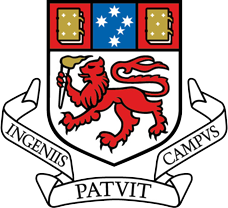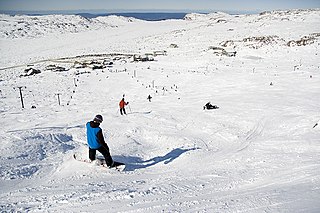Related Research Articles

Tasmania is an island state of Australia. It is located 240 km (150 mi) to the south of the Australian mainland, separated from it by Bass Strait. The state encompasses the main island of Tasmania, the 26th-largest island in the world, and the surrounding 1000 islands. It is Australia's least populated state, with 541,965 residents as of March 2021. The state capital and largest city is Hobart, with around 40 percent of the population living in the Greater Hobart area.

Launceston is a city in the north of Tasmania, Australia, at the confluence of the North Esk and South Esk rivers where they become the Tamar River (kanamaluka). Launceston has a population of 110,472 in the significant urban area (2020). Launceston is the second most populous city in Tasmania after the state capital, Hobart, As of 2020, Launceston is the 17th largest city in Australia. Launceston is fourth-largest inland city and the ninth-largest non-capital city in Australia. Launceston is the most liveable regional city, and was one of the most popular regional cities to move to in Australia from 2020 to 2021. Launceston won the Australian town of the year in 2022.

The University of Tasmania (UTAS) is a public research university, primarily located in Tasmania, Australia. Founded in 1890, it is Australia's fourth oldest university. Christ College, one of the university's residential colleges, first proposed in 1840 in Lieutenant-Governor Sir John Franklin's Legislative Council, was modeled on the Oxford and Cambridge colleges, and was founded in 1846, making it the oldest tertiary institution in the country. The university is a sandstone university, a member of the international Association of Commonwealth Universities, and the Association of Southeast Asian Institutions of Higher Learning.

The West Coast of Tasmania has a significant convict heritage. The use of the west coast as an outpost to house convicts in isolated penal settlements occurred in the eras 1822–33, and 1846–47.

Ben Lomond is a mountain in the north-east of Tasmania, Australia.
Football Tasmania (FT) is the governing body for soccer in the Australian state of Tasmania. The federation oversees competitions across Tasmania, Tasmanian representative teams, and development of the sport in the state. The federation was known as the Tasmanian Soccer Association until 1996, when it was renamed to Soccer Tasmania. In line with national changes in March 2006, it became Football Federation Tasmania. In February 2019, the organisation became simply Football Tasmania.
Mount Read is a mountain located in the West Coast region of Tasmania, Australia, and is at the north west edge of the West Coast Range.
The Mount Jukes Mine sites were a series of short-lived, small mine workings high on the upper regions of Mount Jukes in the West Coast Range on the West Coast of Tasmania.

TheMercury is a daily newspaper, published in Hobart, Tasmania, Australia, by Davies Brothers Pty Ltd (DBL), a subsidiary of News Corp Australia, itself a subsidiary of News Corp. The weekend issues of the paper are called Mercury on Saturday and Sunday Tasmanian. The current editor of TheMercury is Craig Warhurst.

The Tasmanian emu is an extinct subspecies of the emu. It was found in Tasmania, where it had become isolated during the Late Pleistocene. As opposed to the other insular emu taxa, the King Island emu and the Kangaroo Island emu, the population on Tasmania was sizable, meaning that there were no marked effects of small population size as in the other two isolates.
Thomas Bather Moore was a pioneer explorer of Western and South West, Tasmania, Australia.

The Royal Society of Tasmania (RST) was formed in 1843. It was the first Royal Society outside the United Kingdom, and its mission is the advancement of knowledge.

The Tasmanian Museum and Art Gallery (TMAG) is a museum located in Hobart, Tasmania. The museum was established in 1846, by the Royal Society of Tasmania, the oldest Royal Society outside England. The TMAG receives 400,000 visitors annually.
The Companion to Tasmanian History was a book produced in 2005 by the Centre for Tasmanian Historical Studies at the University of Tasmania, in conjunction with the Tasmanian Government celebrations of the Bicentenary of Tasmania.

The Stacks Bluff is a peak in northeast Tasmania, Australia. The mountain is situated on the Ben Lomond plateau.
Charles Gould was the first Geological Surveyor of Tasmania 1859–69.
The Zeehan and Dundas Herald was a newspaper for the West Coast Tasmania community, based in Zeehan and Dundas from 1890 to 1922.
The Tasmanian Great Western Railway was a proposed railway that was never built to connect Hobart with the west coast during the 1890s mining boom in Tasmania. It would have passed through a route somewhat similar to the current Lyell Highway through the northern edge of South West Tasmania into the west coast
Norman James Brian Plomley regarded by some as one of the most respected and scholarly of Australian historians and, until his death, in Launceston, the doyen of Tasmanian Aboriginal scholarship.
Hobart Walking Club is a recreational walking club based in Hobart, Tasmania, Australia that was started in 1929 by Jack Thwaites and Evelyn Temple Emmett
References
- ↑ FAHS website. Retrieved 24 August 2010.
- ↑ "Papers and Proceedings". Tasmanian Historical Research Association. Retrieved 26 August 2011.